In the circuit below I am trying to achieve 15.56 gain on IC2.
The following combinations (in kOhms) are fairly close:
20/1.3 or 200/13 = 15.38
47/3 or 470/30 = 15.67
51/3.3 or 510/33 = 15.45
56/3.6 or 560/36 = 15.56
The pair 56k/3.6k is actually spot-on and seems to be OK for OPA548 and required bandwidth (under 200kHz) per this answer. Although it is rather on low side, just as 560k/36k seems a bit too high.
Now, to consider SI8920B requirements I have to look at input impedance of difference amplifier, or maybe at all three impedances according to this answer.
The problem is that I don't understand which one is specified in the datasheet. It says "Output Resistive Load" minimum is 5k. If this is differential impedance then all combinations but 20/1.3 are OK. However an application example in the datasheet has 5k resistor on both lines. If this means datasheet specification is for individual outputs then I am left with high resistance combinations only.
So, my gut feeling tells me to go with 200k/13k.
Question: is this a right choice?
